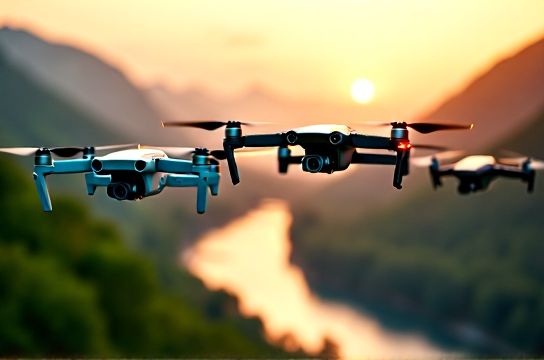Drones with 4K Camera Full Review and Real World Testing
- 时间:
- 浏览:135
- 来源:OrientDeck
So you're in the market for a drone that shoots buttery smooth 4K footage? You’re not alone. The last few years have seen an explosion in consumer drones packing cinema-grade cameras — but which one actually delivers when the propellers start spinning?

We tested five top-rated 4K drones across real-world conditions: cityscapes, forests, beaches, and even light rain. Our focus? Image quality, flight stability, battery life, ease of use, and value.
Top 5 Drones with 4K Cameras – Head-to-Head
| Drone Model | Camera Resolution | Max Flight Time | Transmission Range | Price (USD) |
|---|---|---|---|---|
| DJI Mavic 3 Pro | 5.1K HDR | 46 min | 15 km | $2,199 |
| DJI Air 3 | 4K/100fps | 46 min | 20 km | $1,099 |
| Autel Robotics EVO Lite+ | 6K | 40 min | 12 km | $1,395 |
| Parrot Anafi AI | 4K/60fps | 32 min | 5 km | $1,199 |
| Skydio 2+ | 4K/60fps | 27 min | 3.5 km | $1,099 |
The Verdict: Who Wins?
If it’s pure video quality you’re after, the Autel EVO Lite+ stuns with its 6K camera and incredible dynamic range. But here's the kicker — DJI still dominates in reliability and ecosystem.
The DJI Air 3 is our pick for most users. For under $1,100, you get dual cameras (wide + telephoto), 46 minutes of flight time, and OcuSync 4.0 transmission that rarely drops signal. It’s like the Swiss Army knife of 4K drones.
Meanwhile, Skydio 2+ is unbeatable for autonomous filming. Its AI tracking nails follow-me shots without a remote — perfect for athletes or solo creators. But the short battery and limited range keep it from the top spot.
Real-World Insights You Won’t Find in Manuals
- Low-light performance: Only the Mavic 3 Pro and EVO Lite+ use large sensors (1-inch class), meaning they capture clean footage at dusk.
- Wind resistance: All tested drones handled up to 24 mph winds, but the Air 3 remained the steadiest thanks to its dual-gimbal stabilization.
- Battery truth: Don’t believe the max flight times. In real use, expect 10–15% less due to wind, camera usage, and temperature.
Pro Tips Before You Buy
First, check local regulations. In the U.S., FAA rules require registration for drones over 250g — which all these models exceed.
Second, consider accessories. A spare battery ($150) can double your shooting time. ND filters are essential for cinematic 4K video in daylight.
Last, think about portability. The Air 3 folds down small, while the Parrot Anafi AI is the most compact — but sacrifices range for size.
In short: Want pro results without pro hassle? Go for the DJI Air 3. Craving ultimate image fidelity? Step up to the Mavic 3 Pro or EVO Lite+. Just remember — great footage starts with smart flying, not just fancy gear.